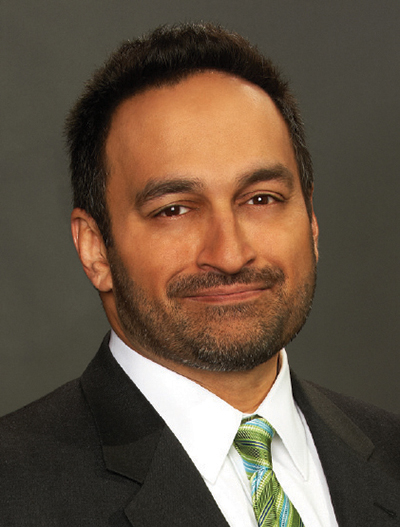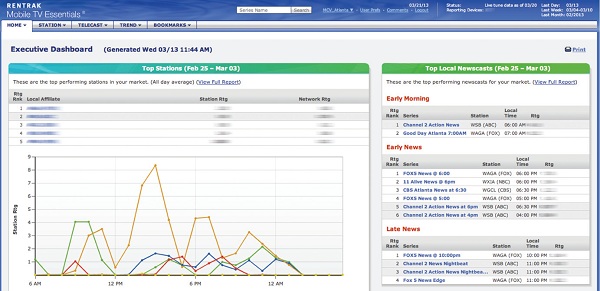Mobile TV Capabilities Expanded
SEATTLE—Since the concept of adding mobile channels to broadcast television’s digital signals caught fi re a half dozen years ago, a series of technical milestones to enable that service have been passed. Most recently, in mid-March, the technical standard for the Mobile Emergency Alert System was adopted and published by the Advanced Television Systems Committee.
The importance of mobile emergency alerts over the television broadcast infrastructure was made clear during Hurricane Sandy, when a quarter of the cellular phone sites in the affected New York and New Jersey area went down during the storm, but only a single television broadcaster there went off the air.
“[Mobile TV’s advantage in emergency alerting is] based on the fact that broadcasters have a very robust infrastructure,” said Jay Adrick, technology advisor at Harris Broadcast who also served as vice chairman of the ATSC and chairman of the Open Mobile Video Coalition Forum. “Typically, where there’s a major event, the wireless networks nearby go down because they’re overloaded, or they go down because they’re fragile and require a lot of interconnect that usually gets disrupted by whatever natural disaster or whatever event may have just occurred.”

Salil Dalvi In addition to the robust and redundant qualities of a broadcast transmission infrastructure, M-EAS can provide audio and video in addition to text in its emergency notifications.
“The scheme that wireless carriers have for mobile emergency information is smaller than a tweet, it’s 90 [text] characters,” said Sterling Davis, broadcast consultant and former vice president of technical operations at Cox Media Group. “All that does is say ‘tune to your local media for information if there’s a problem.’ That’s not very helpful. You don’t even know if there’s a problem in your area, you don’t even know what area they’re talking about.”
AUDIENCE MEASUREMENT
Another technological advancement for mobile TV has come in audience measurement, a critical element in efforts to monetize mobile channels. Collecting those ratings relies on a feedback loop via a viewing application on a mobile TV-enabled smartphone or other connected device. A pair of groups of stations broadcasting mobile channels, the Mobile Content Venture (with its Dyle-branded service) and the Mobile 500 Alliance (branded MyDTV), have launched commercial mobile services which have tested the mobile ratings system and mobile TV broadcasting in general. Portland, Ore.-based Rentrak facilitates the audience measurement.
Salil Dalvi, co-general manager of MCV and senior vice president of Digital Distribution at NBC, explained the mobile ratings collection system: “The application that helps a consumer view the content, providing a real-time program guide and the user experience overall, is enabled by Rentrak to also measure what channels the consumer chooses to view and how long they view it. That measurement happens within the app on the viewing device, and because there’s no viewership that’s happening outside the app, all the viewership is being measured.” The viewing data from the viewer’s smart device is uploaded via the smart device’s network connection.
The professional video industry's #1 source for news, trends and product and tech information. Sign up below.
The Dyle stations’ mobile TV broadcasts are encrypted. By signing up for a free subscription, which gives demographic viewer data to the mobile channel operators, the mobile viewer receives an app that provides a viewers’ guide and unencrypts channels for viewing. The app captures viewing data and sends it to Rentrak.
Downstream, this system could also facilitate paid subscription channels as well as free ones.
One anomaly of mobile channel viewing is the five to seven seconds of a blank screen when channels are changed. Randa Minkarah senior vice president, revenue and business development for Fisher Communications, a Seattle-based station group, detailed how that channel change blackout period can be filled with an interstitial commercial.
“[The viewer has] already made the decision to leave the channel, and there’s nothing going on there but black, so why not use it?” she mused. The app used Mobile 500’s commercial service soft launch in Seattle and Minneapolis/St. Paul enabled the channel change ad serve. “So that’s an opportunity for broadcasters to participate and sign up to get a share of that revenue once we get the critical mass to begin.”

ATSC conducted M-EAS demos at CES in January on a prototype LG smartphone. Two hurdles mobile channel broadcasters admit they have to get over are elements they do not control: availability of connected mobile channel viewing devices and the adoption of those devices by users. To date, almost all mobile TV viewing has been enabled by a peripheral dongle attached to a smart device. Minkarah said preliminary data from Mobile 500’s soft launch showed heavy usage of dongled devices: 55 percent on iPads, 40 percent on iPhones, and the remainder on video iPods.
MCV’s Dalvi noted that “in the near term we think [the dongles are] are a good and best solution to begin with, but over time we need to have [that mobile viewing capability built into devices] so that broadcast mobile channels just come into your smartphone.” The thought goes that the simpler mobile TV-enabled smart devices are, the more consumers will buy and use them.
MOBILITY CORE TO ATSC 3.0
All of this mobile TV activity is moving along under the shadow of industry work towards a future, non-backwards compatible digital television standard, dubbed ATSC 3.0. This work is proceeding predicated on mobility as a core capability, not an “afterthought,” according to Mark Aitken, vice president of Advanced Technology for Sinclair Broadcast Group and chairman of ATSC TG1/S4, the specialist group responsible for Mobile DTV standardization. Current work on the present mobile TV standard (ATSC A/153) continues “inside of a framework that was not initially designed for mobility and was constrained by a need for backwards compatibility.”

Rentrak’s Executive Dashboard offers users detailed reports about station ratings at-a-glance. Aitken noted that some critical pieces of technology that are driving mobile TV, such as smartphones and tablets, were neither invented nor even on anyone’s radar when the original ATSC standard was written.
He said the present mobile TV system can certainly be improved, as can DTV overall. But Aitken cautioned against treating the business of television as though it’s broken. “There’s a reason Google TV, Apple TV and everybody else have failed in their efforts to get into the TV market because they all started on the premise that TV is broken, and needs to be done differently,” he said. “I think that anybody who comes along and says ‘TV’s not broken but we’re about the business of improving the experience,’ I think that those are going to be the winners.”
When asked about the role of social networking and the future of TV, Aitken stated “local broadcast TV is the original technology inspired social network and continues today to bring people together in a way no other medium can.”
In the meantime, one of those improvements to the current mobile TV system is in providing higher resolution video. “It’s geared towards the capabilities of an iPad,” said Adrick. “Where you’re looking at a larger screen, and people wanted the higher resolutions. The original mobile resolution was 416x240, which looks nice on small screens, but when you get it out on larger screens it tends to not be as sharp as some people would like.
“That’s something the encoder people have been doing based on the fact that we’ve expanded the resolution options within the standard.”
